Reducing raw material loss through slitter parameter adjustment requires comprehensive consideration of equipment performance, material characteristics and process requirements, and the following are the specific methods and steps:
1. Accurately adjust the slitting size
• Optimized typesetting design: use CAD or professional typesetting software to maximize material utilization and reduce leftovers.
• Set the exact slitting length: Fine-tune the slitting size according to the order demand and avoid waste due to over-reservation.
• Dynamic Compensation Function: Enable the automatic compensation function of the slitter (such as tool wear compensation, tension fluctuation compensation) to ensure that the actual slitting size is consistent with the set value.
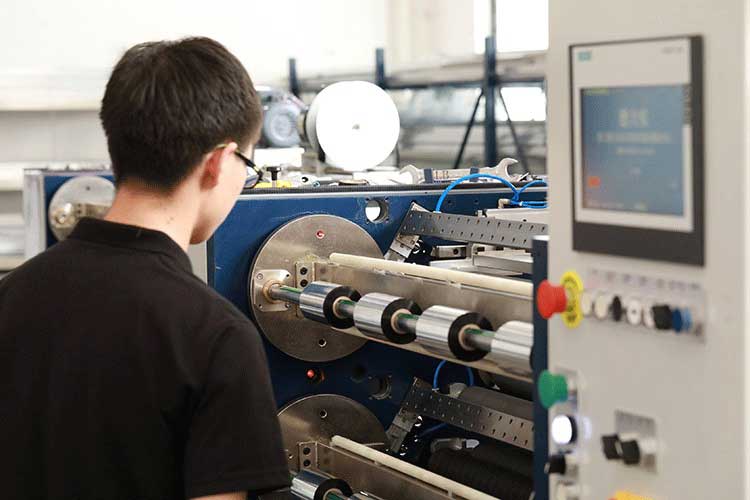
2. Control the slitting tension
• Material Adaptation Tension Setting:
◦ Film/soft material: reduce tension (such as 10~30N) to prevent tensile deformation.
◦ Paper/hard materials: Appropriately increase the tension (such as 50~100N) and avoid wrinkles.
• Closed-loop tension control: The closed-loop system of servo drive + tension sensor is used to control the fluctuation within ±5%.
• Taper tension adjustment: For large coil diameter materials, the taper tension mode (e.g. linear from 100N to 60N) is used to prevent the inner layer from being extruded and deformed.
3. Tool and slitting quality optimization
• Tool selection and maintenance:
◦ Round blades are suitable for high-precision slitting (e.g., ±0.1mm), and flat blades are used for thick materials.
◦ Regularly inspect the edge for wear and polish or replace it every 8 hours.
• Overlap adjustment: The overlap amount of soft materials is set to 10%~20% of the material thickness (for example, 0.1mm thick film overlaps 0.02mm).
• Slitting speed matching: Adjust the speed according to the thickness of the material, for example:
◦ Tissue paper (< 80gsm):300~600m/min
◦ Thick film (> 0.2mm):50~150m/min
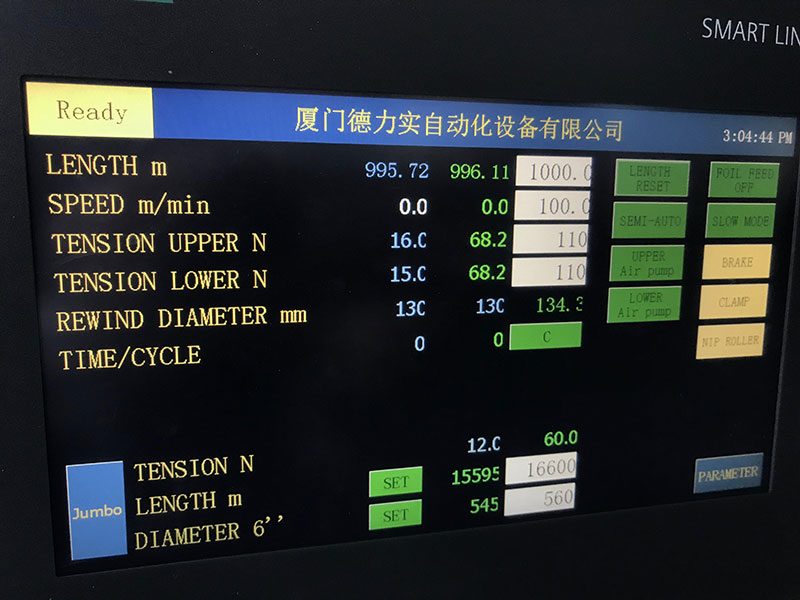
4. Guiding and winding control
• Automatic guiding system: set the guiding sensitivity to ±0.5mm, using photoelectric or ultrasonic sensors.
• Winding pressure gradient:
◦ Initial roll diameter: pressure 0.2~0.3MPa
◦ When full rolling: pressure 0.1~0.15MPa
• Surface curl control: apply 5~10N/m² back pressure to smooth materials to prevent air interlayering.
5. Linkage optimization of process parameters
• Temperature-sensitive materials: The temperature of the heating knife is controlled at 50%~70% of the melting point of the material (such as 80~120°C for PP film).
• Humidity compensation: When the humidity of paper materials > 60%, the slitting speed will be reduced by 15%~20%.
• Waste edge recycling: Set the width of waste edge ≤2mm, and link the waste suction device, the recovery rate can reach 95%.
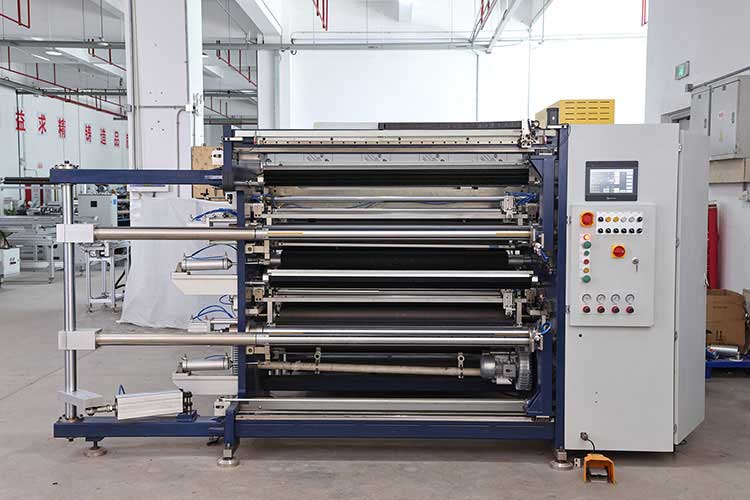
6. Data monitoring and feedback
• Real-time monitoring system:
◦ CCD is installed to detect the quality of the slitting edge, and the defect detection rate ≥ 99.9%.
◦ Loss Statistics Module: Automatically calculates the difference between the theoretical and actual usage (accuracy ± 0.5%).
• OEE analysis: reduce the slitting loss rate from 3% to less than 0.8% through the overall equipment effectiveness evaluation.
Implementation steps
1. Baseline test: record the current attrition rate (e.g. 2.5%) and key parameters.
2. Univariate adjustment: Adjust the tension (± 10% test) first, and observe the loss change.
3. DOE experimental design: Orthogonal tests are carried out on tension, velocity, and overlap to find the optimal combination.
4. Continuous improvement: Analyze the loss data and update the parameter library every month.
Through the above methods, the slitting loss of PET film in typical cases can be reduced from 2.2% to 0.7%, saving about 15~25% of raw material costs per year. The key point lies in the systematic optimization and real-time dynamic adjustment of parameters.
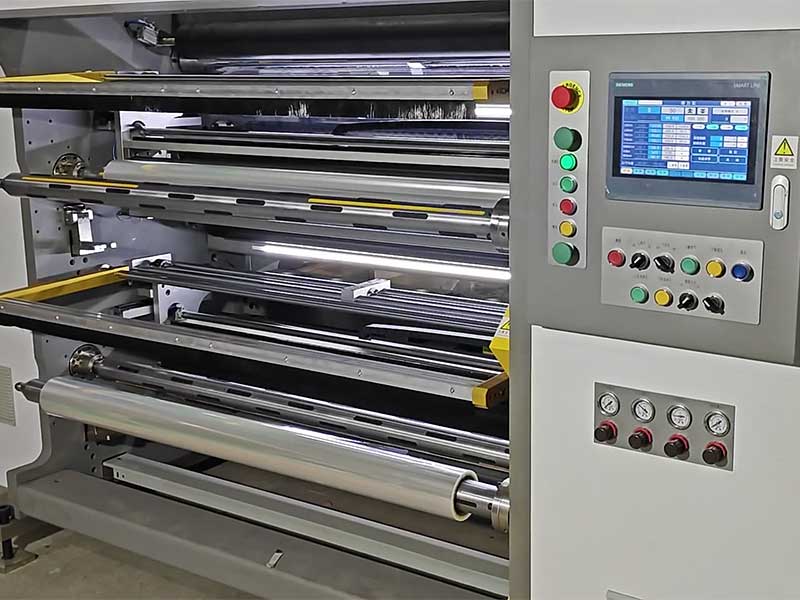
A deviation of 0.1 mm is insignificant in the macro world, but in the field of solar film slitting, it can become a watershed in quality.
24. November, 2025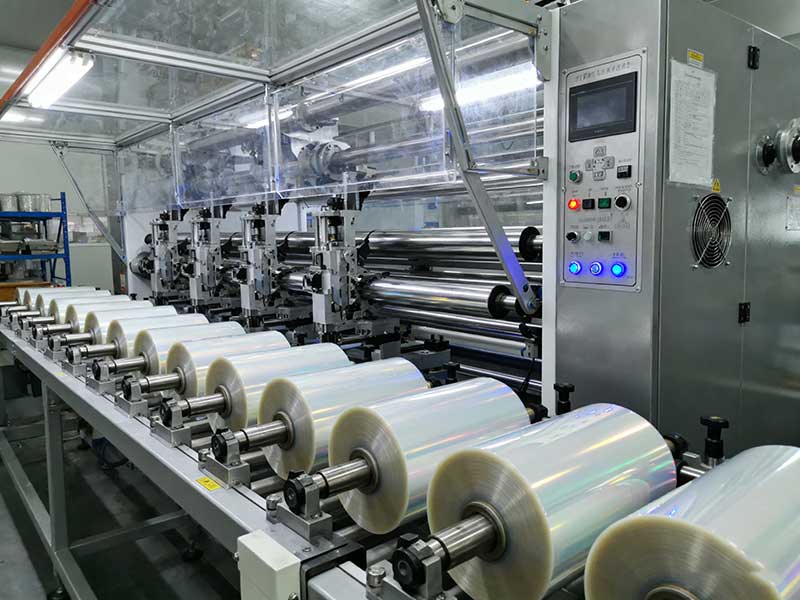
It is precisely the film slitting machine, this "precise scalpel", which transforms rough "large rolls" into ready-made "high-quality products", directly shaping your product competitiveness.
21. November, 2025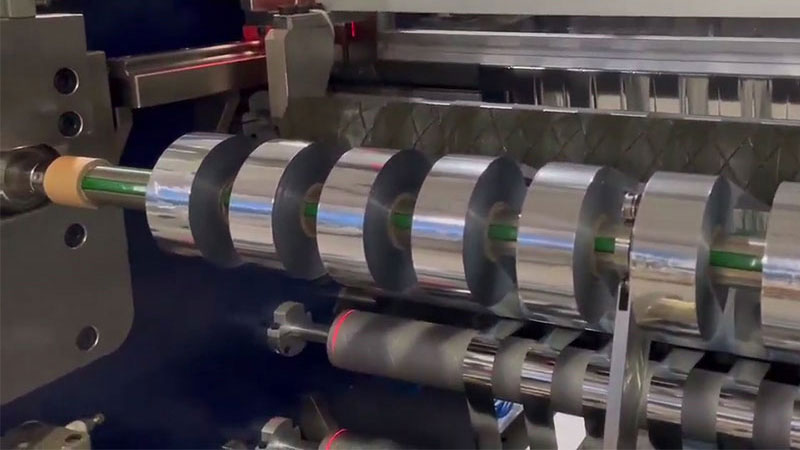
An excellent hot stamping foil slitting machine is the core equipment that casts this "precision blade".
03. November, 2025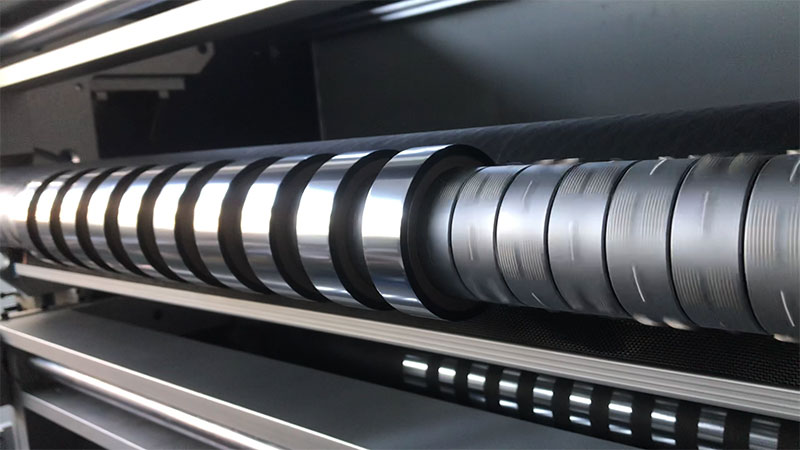
Having advanced slitting equipment and technology is itself an endorsement of the strength of the enterprise.
23. September, 2025
PET, OPP, and PVC have significant differences in the key points of slitting process and equipment selection due to their different physical properties of substrates and coatings.
16. September, 2025